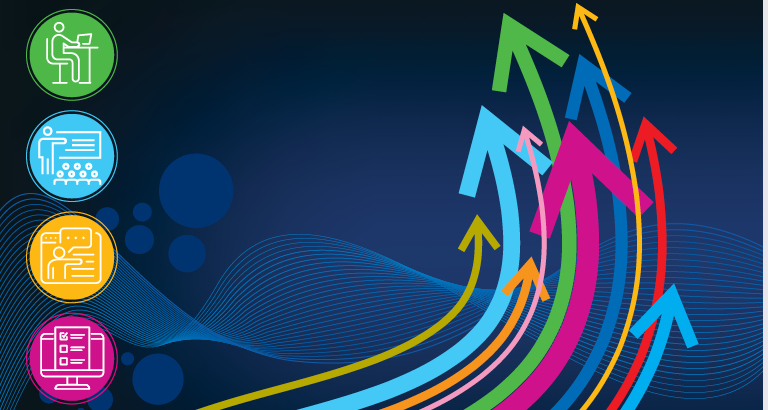It is no surprise that radiology residents want a learning experience that goes beyond reading articles and listening to didactic lectures. They want deeper learning and more comprehensive understanding of key healthcare economics concepts to better prepare them as they move forward in their careers. That’s why the Radiology Leadership Institute® (RLI) Resident Milestones Program: Economics and the Physician Role in Health Care Systems provides a unique, interactive experience for residents to deepen their knowledge of a rapidly changing radiology healthcare economics landscape — and at the same time, helps satisfy the Accreditation Council for Graduate Medical Education’s (ACGME) Physician Role in Health Care Systems sub competency (part of the Systems-Based Practice competency).
The program, developed by the RLI in concert with healthcare economics experts and residency program directors, brings together nationally recognized professionals and seasoned practitioners to provide residents with a state-of-the-art, modern educational experience. The Bulletin spoke with Harprit S. Bedi, MD, vice chair for education in radiology at Boston Medical Center; Ryan K. Lee, MD, MBA, chair of radiology at Einstein Healthcare Network and associate professor at the Sydney Kimmel College at Thomas Jefferson University; and Melissa M. Chen, MD, assistant professor at MD Anderson Cancer Center and associate executive director for the MD Anderson Cancer Network, about what the RLI program has to offer residency programs — and why it’s unlike anything else of its kind.
How did the RLI Resident Milestones Program come to fruition?
HB: In 2014, we realized that many small and medium-sized radiology programs did not have the healthcare economics subject matter experts to sufficiently teach this content to their residents. Larger programs were querying their local business schools to get someone to teach healthcare economics (which can be an expensive endeavor), but the RLI had actual radiologists who were subject matter experts in this space.
MC: The initial goal was to put together a curriculum to address the healthcare economics milestones that the ACGME requires — and the program keeps up with changes to the ever-shifting medical economics landscape. When the ACGME updated the competencies in 2019, we expanded the program to cover the addition of new content that focuses on the broader healthcare system. The program design really focuses on active learning by encouraging residents to actively participate in a local activity/ exercise, such as trying to figure out how reimbursement works at their own hospital or in their own health system.
How is the program structured?
HB: Many educational practices in medicine are sort of old-fashioned, with a lot of lecturing and people listening. I'm much more interested in active learning — looking at modern learning theory using blended and interactive learning to facilitate long-term retention. I wanted to create a curriculum based on this philosophy.
Given the success of the 2015 pilot program, the RLI and the program faculty built on the overall design and expanded the program to cover all five levels of the Health Care Economics sub competency (now referred to as the Physician Role in Health Care Systems). During each level, residents complete four interactive components to ensure a deep learning and comprehensive understanding of the content.
The first component is pre/self-directed learning which allows participants the opportunity to do some learning on their own. Residents are introduced to the main concepts through a series of pre-recorded lectures and articles, to be studied on their own schedule. For the second component, residents build on the pre-learning and work together at their home institution to participate in a local activity and small group discussions. The whole point is to learn by doing. You can read and listen but now you’re required to gather data and reinforce your knowledge by applying it within your practice setting.
The third component is the cross-institutional live group webinars. The residents at each participating institution give a five-minute presentation to share the results of their local activity, which affords them the opportunity to learn how reimbursement and processes differ depending on type, size, and location of institution. Facilitated by the RLI faculty, the webinars also provide a chance for in-depth discussion and the opportunity to ask questions of the experts.
For the fourth and final component, residents complete an assessment at the end of each level, to reinforce learning and ensure knowledge retention.
The whole point is to learn by doing. You can read and listen but now you’re required to gather data and reinforce your knowledge by applying it within your practice setting.
How is the program unique?
RL: Many radiology residents get relatively little exposure to healthcare economics in their training. When I was a radiology resident many years ago, there was no curriculum at all for these topics. The ACGME has now incorporated milestones for healthcare economics as part of the radiology residency education, however most programs do not have the resources and are not equipped to teach this material as comprehensively as the RLI Resident Milestones Program does.
MC: The residents are coming away from this course better prepared to engage in the real world than I think I was when I graduated from residency. I don’t think I had nearly as good of an understanding as they do.
What I am most excited about is how the material reflects what is currently happening in the reimbursement world. In looking at the presentations that the residents put together, it’s really apparent that they’ve taken the knowledge from the course and then applied it to pretty big concepts. It’s not just that they can tell you how radiologists are paid — they can actually see the implications for where healthcare is headed in the future, what we should be doing to anticipate those changes, and how we can adapt our practices to these potential changes.

